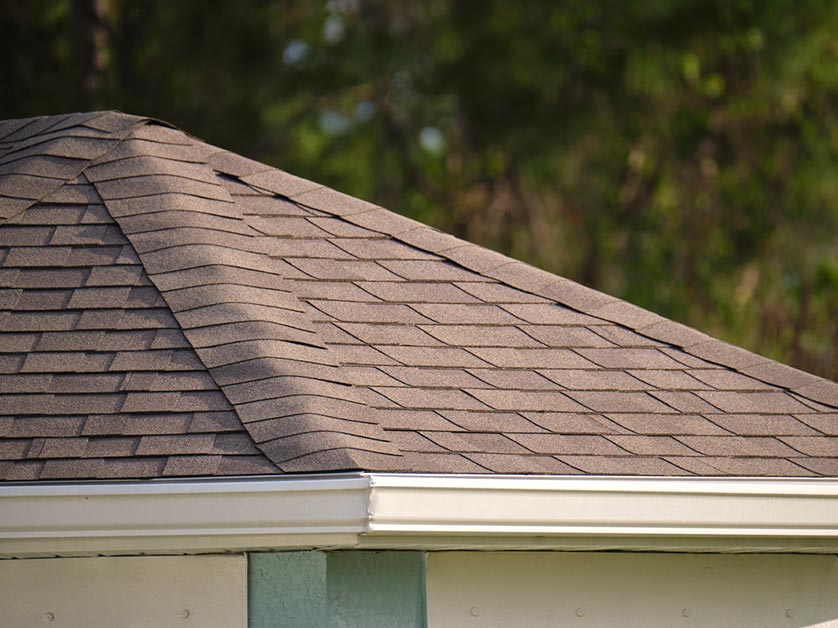Fires can be devastating and pose a significant threat to homes and buildings, especially if the roof is not fire-resistant. As a homeowner or building owner, it is crucial to take proactive measures to reduce the risk of roof fires and protect your property, belongings and loved ones. Implementing specific safety measures and precautions can help mitigate fire hazards and enhance the fire resistance of your roof.

In this comprehensive guide, Sterling Exteriors explores essential steps to reduce fire risk for roofs.
Choose Fire-Resistant Roofing Materials
The type of roofing material you choose can significantly impact your roof’s fire resistance. Opt for fire-resistant roofing materials designed to withstand flames and reduce the spread of fire. The most fire-resistant roofing materials are classified as Class A, offering excellent protection against fire hazards. Such materials include clay or concrete tiles, metal roofing, and asphalt shingles with fire-resistant coatings. These materials can withstand intense heat and provide a valuable layer of defense against roof fires.
Keep the Roof Clean and Debris-Free
Regular roof maintenance is essential in reducing fire risk. Ensure the roof is regularly cleaned and free from accumulated debris, such as dry leaves, branches and twigs. These combustible materials can serve as fuel for fires, so periodically inspect and clean the roof to eliminate such fire hazards.
Maintain Proper Ventilation
Adequate roof ventilation plays a crucial role in reducing fire risk. It helps dissipate heat and prevents hot air buildup, minimizing the risk of ignition caused by overheating in the attic or roof space. Inadequate ventilation can trap heat and increase the likelihood of fire ignition. Regularly check and maintain the roof ventilation system to ensure it functions correctly.
Clear Gutters and Downspouts
Proper drainage is vital for roof fire prevention. Keep gutters and downspouts clear from debris to prevent blockages leading to water pooling on the roof. Standing water can damage the roof’s integrity and create conditions favorable for fire ignition. Regularly inspect and clean gutters and downspouts to ensure proper water flow.
Install Spark Arrestors
If your property is in an area prone to wildfires or where sparks are common, consider installing spark arrestors on chimneys and vent pipes. These mesh screens prevent embers and sparks from entering the roof and causing fires. Spark arrestors can significantly reduce the risk of fire ignition from external sources.
Create a Defensible Space
Establishing a defensible space around your property is critical in fire prevention. Remove flammable vegetation and materials from the immediate vicinity of the building. This buffer zone acts as a barrier, helping prevent the spread of fires to your roof and home. Regularly maintain the defensible space by trimming trees and shrubs and clearing dead vegetation.
Install Fire-Rated Skylights
Skylights are a beautiful addition to any home but can pose a fire risk if improperly protected. Consider installing fire-rated skylights designed to withstand high temperatures and prevent flames from entering the building in case of a roof fire. Fire-rated skylights provide an added layer of protection and peace of mind.
Regular Roof Inspections
Having your roof checked regularly by a qualified professional is essential to identify potential fire hazards. Inspectors can detect issues such as damaged or deteriorated roofing materials, faulty electrical connections, or improperly installed venting systems, all of which can contribute to fire risk. Addressing these issues promptly can reduce the risk of fire ignition and enhance the overall safety of your roof.
Fireproof Roof Coatings
Consider applying fireproof coatings to your roof as an additional safety measure. These coatings can help reduce the spread of flames and provide extra fire resistance. Fireproof coatings create a protective barrier on the roof’s surface, enhancing its ability to withstand fire exposure. Consult a professional roofer to determine the most suitable fireproof coating for your roofing material.
Educate Household Members
Fire safety education is crucial for everyone in the household. Educate your family members about fire safety and prevention. Make sure they know how to use fire extinguishers, identify potential fire hazards and follow emergency evacuation procedures. Conduct regular fire drills to ensure everyone knows how to respond to a fire emergency.
Invest in Fire and Smoke Detection Systems
Install fire and smoke detection systems in your home to provide early warning in case of a fire. Ensure the detection system is interconnected and equipped with battery backups to ensure continuous monitoring, even during power outages. Regularly test and maintain the detection system to ensure it’s properly functioning.
Have an Emergency Fire Response Plan
Create a comprehensive fire response plan that includes escape routes, designated meeting points and emergency contacts. Share this plan with all household members and practice it regularly. A well-prepared and rehearsed fire response plan can save lives and minimize property damage in the event of a fire.
Regular Roof Maintenance
Regular roof maintenance is another crucial factor in fire risk reduction. Ignoring minor issues such as broken shingles or debris buildup can lead to more significant problems. Unattended roof damage can expose your insulation or allow for dry branches, leaves and other debris to accumulate, both of which could be potential fire hazards. Regular inspection and timely repairs by professionals ensure your roof remains in optimal condition, protecting your home from fire.
Protecting Your Home’s Exterior
Your home’s exterior, particularly the siding, plays an essential role in fire safety. Non-combustible or fire-resistant siding, such as brick, stone, metal, or fiber cement, is ideal for safeguarding your roof and home against fires. Your siding choice can greatly reduce the risk of fire spreading from the outdoors to the inside of your house. Understanding your siding options and their fire resistance properties can make all the difference.
Fire Safety Considerations for Outdoor Living Spaces
Outdoor living spaces are fantastic for relaxing and entertaining but also carry fire risks to your roof and home. If you’re considering creating an outdoor living space, ensuring it’s fire-safe should be a top priority. This includes using fire-resistant materials for structures, safely positioning your barbecues or fire pits away from flammable materials, and keeping your garden or yard free from dry vegetation that could ignite.
Follow Local Regulations and Fire Safety Standards
Strict fire safety regulations are in place to help protect homes from fire risks. It’s important for you to know and understand these regulations and to ensure any roof repair or installation work adheres to these standards. This helps keep your home safe and can save you from fines or penalties for non-compliance.
Reduce Fire Risks Today!
Reducing fire risks for your roof and your home as a whole is a task that requires knowledge, commitment and the help of professionals. Every step counts in protecting your home. Sterling Exteriors is here to help you ensure your home meets all fire safety standards. Talk to us today at (513) 685-8055 or fill out our contact form to schedule a consultation. We serve clients in Milford, Newton and Anderson Township, OH.






